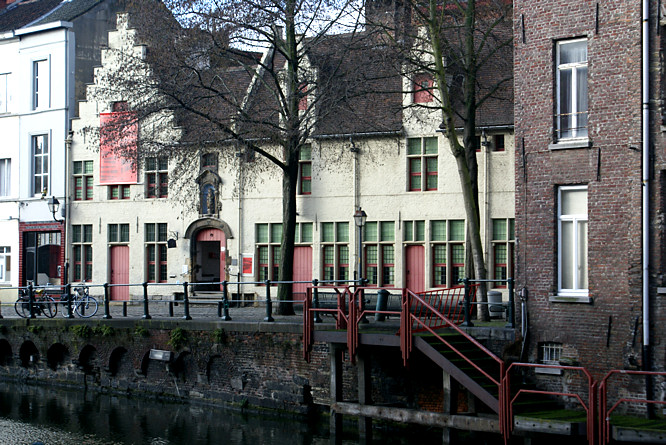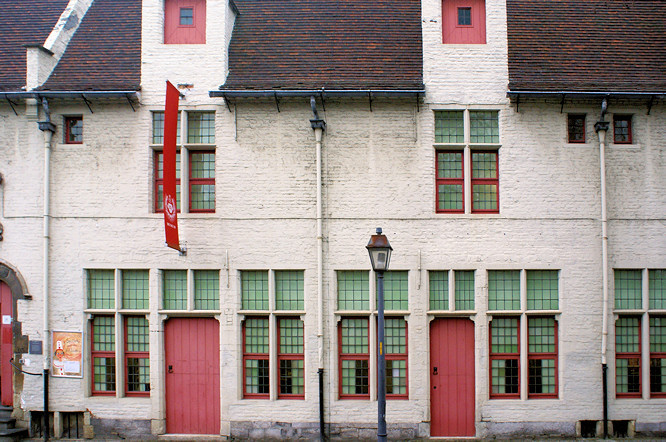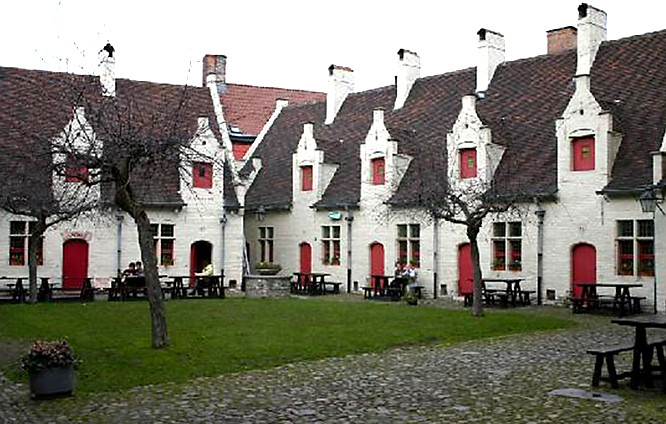Ghent's House of Alijn
This coplex of buildings is also known as the Ghent Huis van Alijn and the Gent Maison d'Alijn and can be found at Kraanlei 65. The House of Alijn on the river bank in Ghent is the venue for the 'Museum of Things that Never Pass'. The House of Alijn is a group of attractive 14th Century almshouses surrounding a lovely courtyard garden.

On a sunny day sit down on one of the picnic benches that surround the courtyard with a cup of coffee and cake whist soaking up the historic charming atmosphere. In the medieval period there was a quarrel between two rich aristocratic families, the Alyns and Rym, who lived in Ghent.
Two children Hendrik and Zeger Alijn were murdered in the St-Baafs Cathedral by two members of the Rijm family. The murderers escaped but later returned to Gent. In 1362 they were pardoned on condition that they had to pay for their evil deed by financing the construction of a 'God's house'.
They had to set up a children's home, a chapel with a hospice where old and needy women could spend the last years of their life on land donated by the Alijn family. The foundation charter of 1363 stipulated that this home had to provide shelter for poor people and exercise works of Christian mercy.

The God's house was called the 'Children Alijns God's house' in memory of the killed children. The poor and the aged were accommodated in cottages around an inner courtyard. At the start of the 16th century, the home manager repaired the dwellings at his own expense and eight new cottages were also built.
In 1534, the first stone was laid for a new chapel in late Gothic style. The upper room is constructed in renaissance style. Until the middle of the 18th century, the hospital served as a residence for elderly women. In 1883 it was degraded to a living area for textile labourers. The buildings started to decay due to neglect. In 1941, the former home became City of Ghent property. Since 1962, after a thorough renovation, the cottages have accommodated the Museum of Folklore.
The 'Museum of Things that Never Pass' exhibition tells a timeless story about people and the way they shape live. The first few rooms look at subjects such as birth, marriage, education and death in the late 19th/early 20th Centuries exploring the rituals surrounding them and, in particular, the religious attitudes prevalent at the time, the latter touching on such themes as sexuality and the place of women in society.

There are detailed information sheets in each room, available in a number of languages, and though the exhibits themselves are not labelled in English this really doesn't matter as the information sheets give such good background information. The next rooms look at more communal aspects of society such as cafe culture, sport and entertainment.
Exhibits include costumes, toys, household items, musical instruments, photographs and posters plus some very individual objects such as talismans given to pregnant women and nursing Mothers to protect themselves and their children at a time when birth was a dangerous procedure and early infancy a difficult time. There is a small refreshment stall inside.
Travel books

